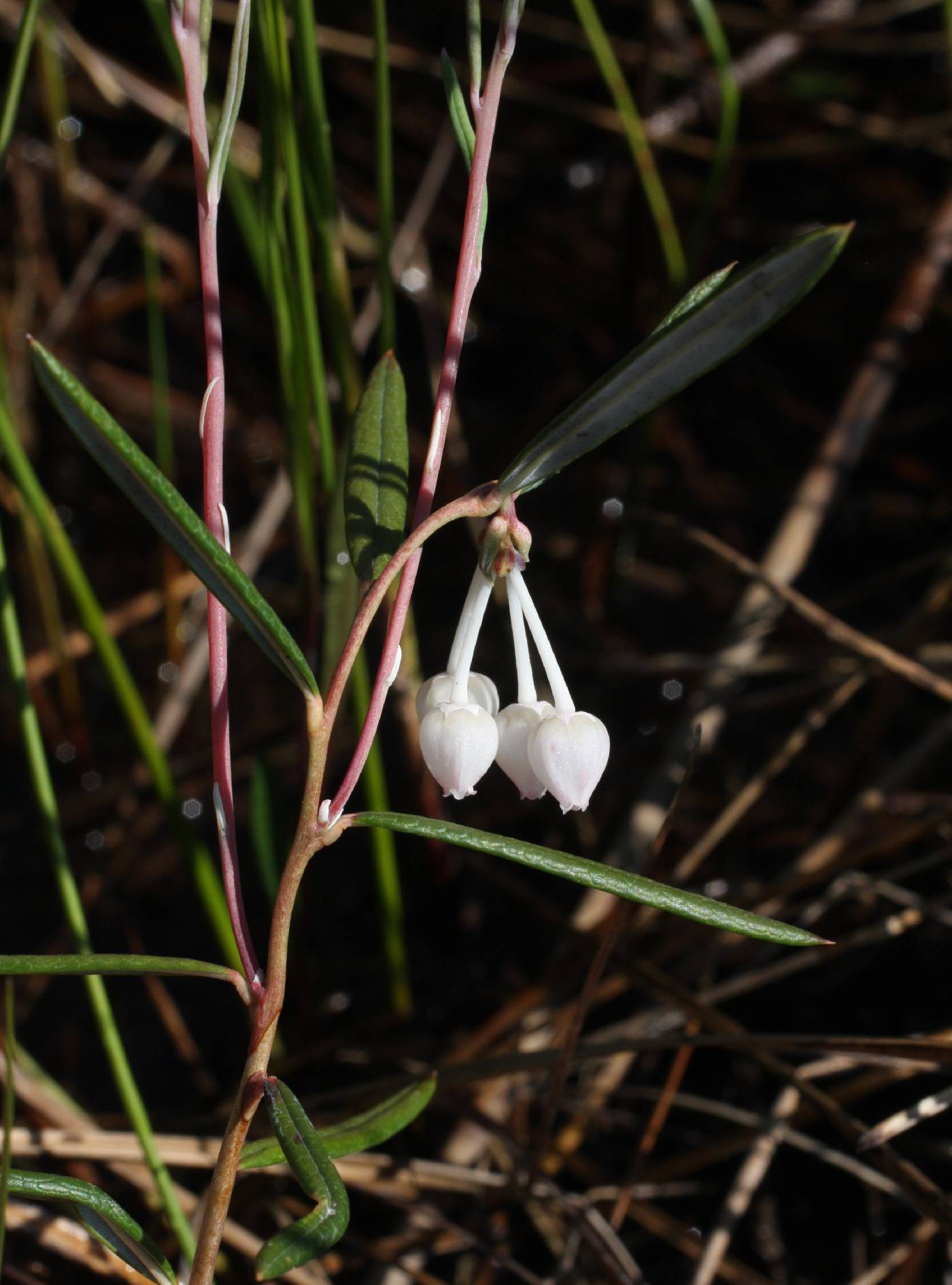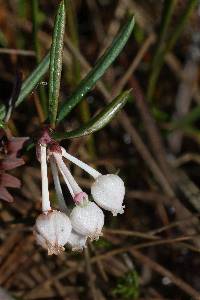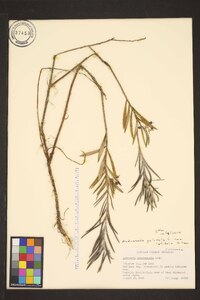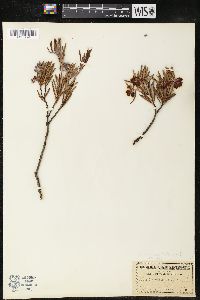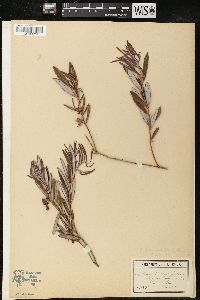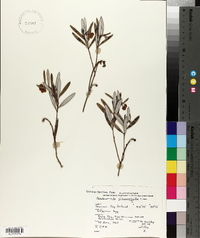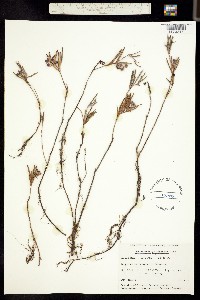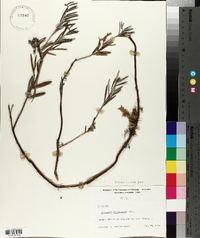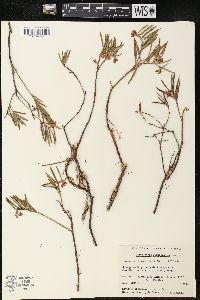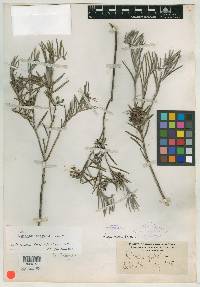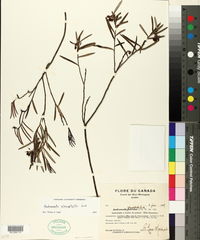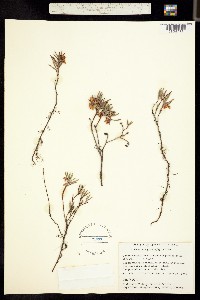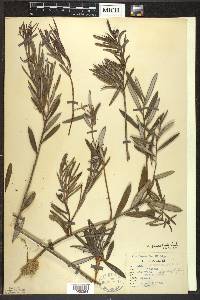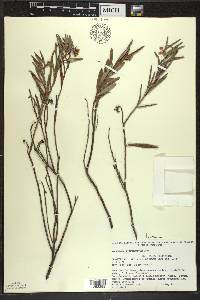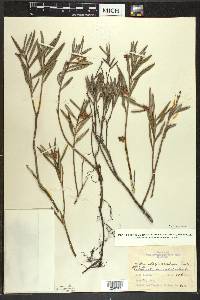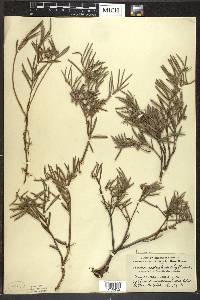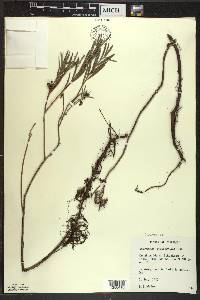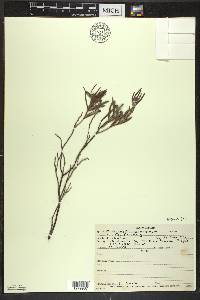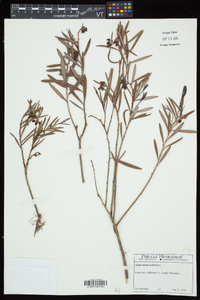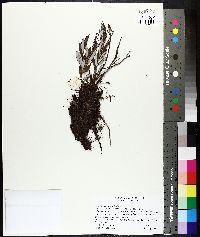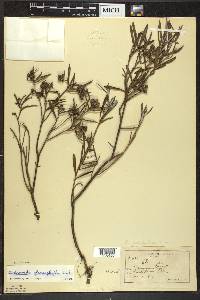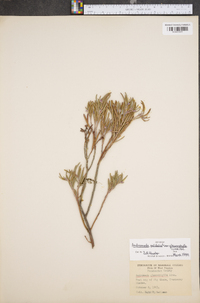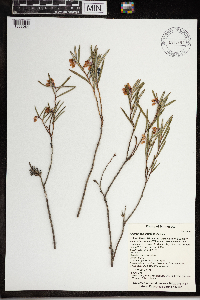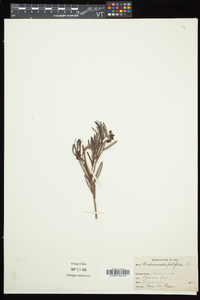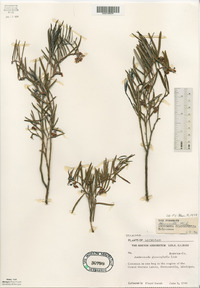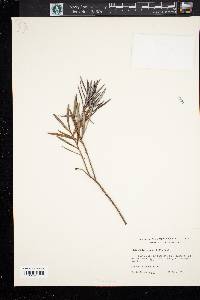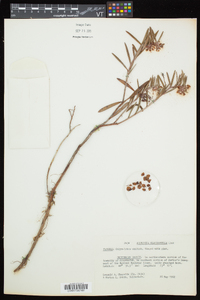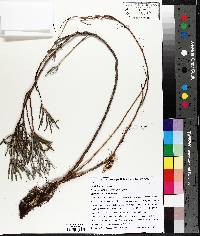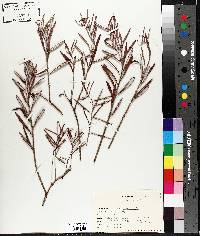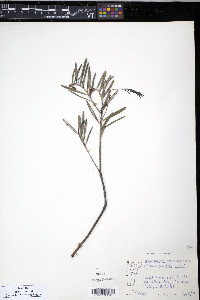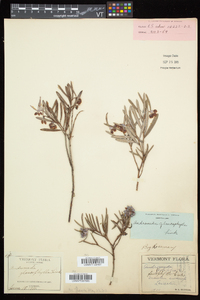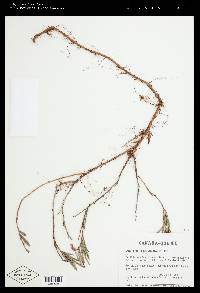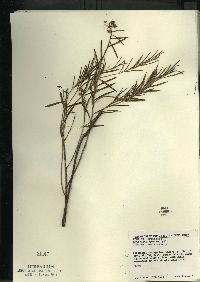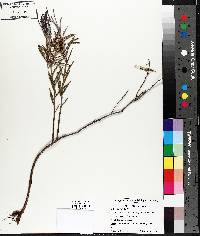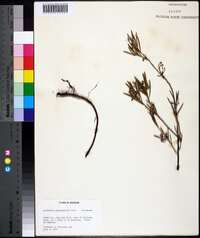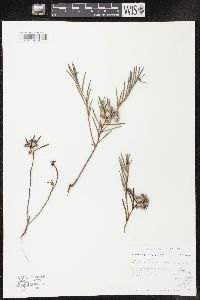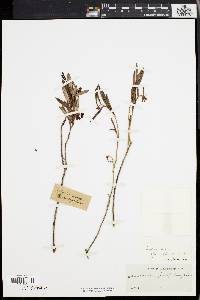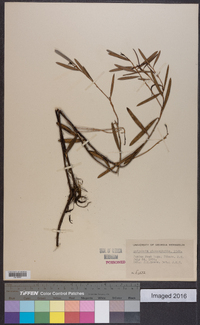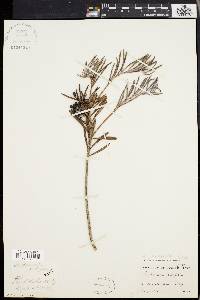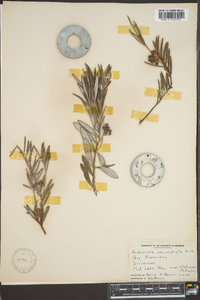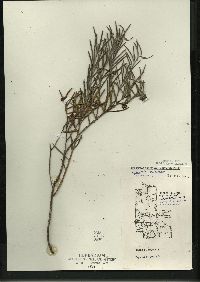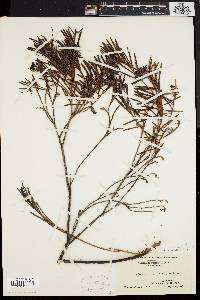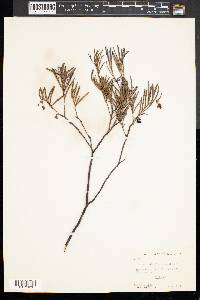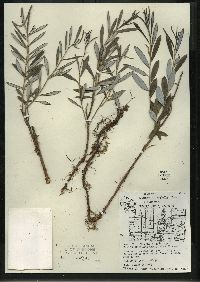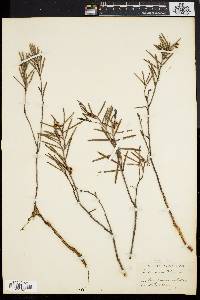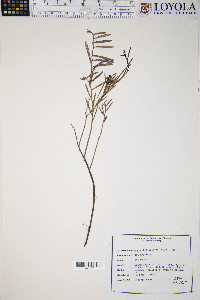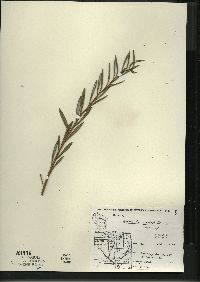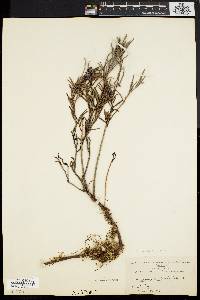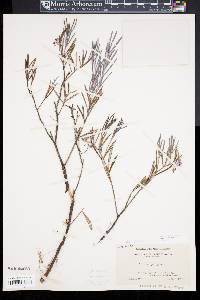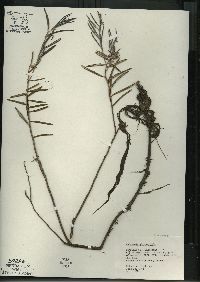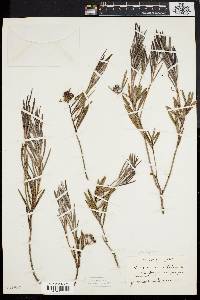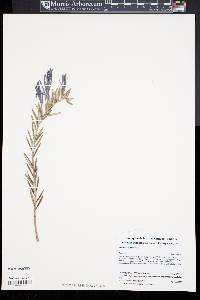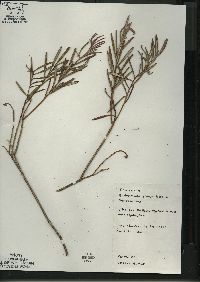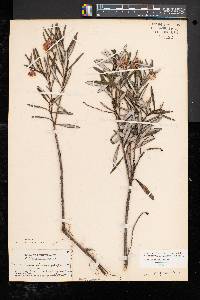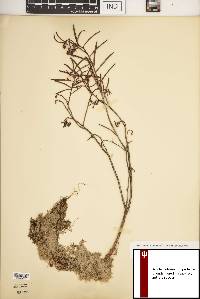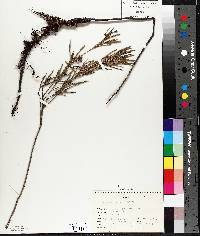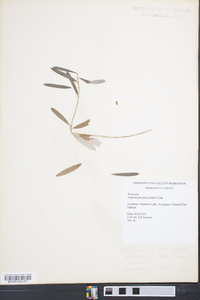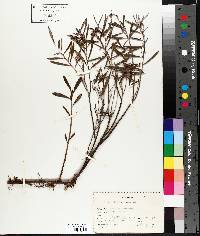
|
|
|
|
Family: Ericaceae
Bog-Rosemary, more...bog rosemary
[Andromeda canescens Small, moreAndromeda glaucophylla Link, Andromeda glaucophylla var. iodandra Fernald, Andromeda glaucophylla var. latifolia , Andromeda polifolia subsp. glaucophylla (Link) Hultén, Andromeda polifolia var. glaucophylla (Link) DC.] |
Shrubs 10-70 cm. Stems ascending. Leaf blades linear to narrowly oblong, (2-)3-5 cm × 2-8 mm, abaxial surface white-hairy to white-velutinous, not glaucous, adaxial often white-hairy on base, petiole, and midvein, ± glaucous when young. Pedicels recurved, pale-glaucous, seldom more than 6(-8) mm, rarely 2 times length of corolla. Corymbs nodding, (2-)4-8-flowered, on curved branchlets. Corollas 6(-8) × 5-6(-7) mm, not dilated basally. Capsules obovoid to subglobose, 4-5.5 × 4 mm, glabrous or minutely hairy at base. 2n = 48. Flowering May-Jul(-Sep); fruiting Jun-Sep. Open, wet sites, bogs, fens, margins of pools, along boggy shores; 100-700 m; Greenland; St. Pierre and Miquelon; Man., N.B., Nfld. and Labr., N.S., Ont., P.E.I., Que., Sask.; Conn., Ill., Ind., Maine, Mass., Mich., Minn., N.H., N.J., N.Y., Pa., R.I., Vt., W.Va., Wis.; Europe; Asia. Variety latifolia occurs farther south and east than does var. polifolia, from southern Saskatchewan and southern Manitoba to West Virginia, Newfoundland, and southern Greenland; it is sympatric with var. polifolia in the boreal extent of its range in southern Labrador, Nunavut, northern Ontario, and Quebec. Variety latifolia is globally secure but is of conservation concern in some states: Connecticut (threatened), Indiana (rare), New Jersey (endangered), Ohio (presumed extirpated), Pennsylvania (rare), and Rhode Island (endangered). In eastern Canada and northeastern United States this variety is highly regarded as an ornamental with named cultivars. The pink flowers in terminal umbels make this acidophilous peat-bog shrub very attractive, and it is cultivated successfully in some gardens where the acid soil condition can be duplicated. Some of these cultivated forms have been given varietal names, although it is unclear whether they deserve taxonomic recognition. Variety iodandra was described as having the corolla broader than long rather than urceolate, and the anthers purple or purplish brown rather than pale brown; it is known only from the type locality, Table Mountain, western Newfoundland.
Shrub to 5 dm; lvs leathery, linear to narrowly elliptic, 2-5 cm, entire, revolute (often completely so), whitened beneath when young by a dense indument of fine erect hairs; fls often pink, on recurved pedicels seldom over 8 mm; cor 5-6 mm thick; 2n=48. Acid bogs; Nf. and Lab. to Sask., s. to N.J., W.Va., n. Ind., and Minn. May, June. Gleason, Henry A. & Cronquist, Arthur J. 1991. Manual of vascular plants of northeastern United States and adjacent Canada. lxxv + 910 pp. ©The New York Botanical Garden. All rights reserved. Used by permission. From Flora of Indiana (1940) by Charles C. Deam A rare plant of bogs in a few of the northern counties. It is now extinct in Wells County because of draining and, no doubt, has or will soon become extinct in several other counties for the same reason. ...... Indiana Coefficient of Conservatism: C = 10 Wetland Indicator Status: OBL Diagnostic Traits: Evergreen shrub; leaves alternate, linear, the lower surface white hairy, the margins revolute; flowers urn-shaped, pink; capsule subglobose. |

